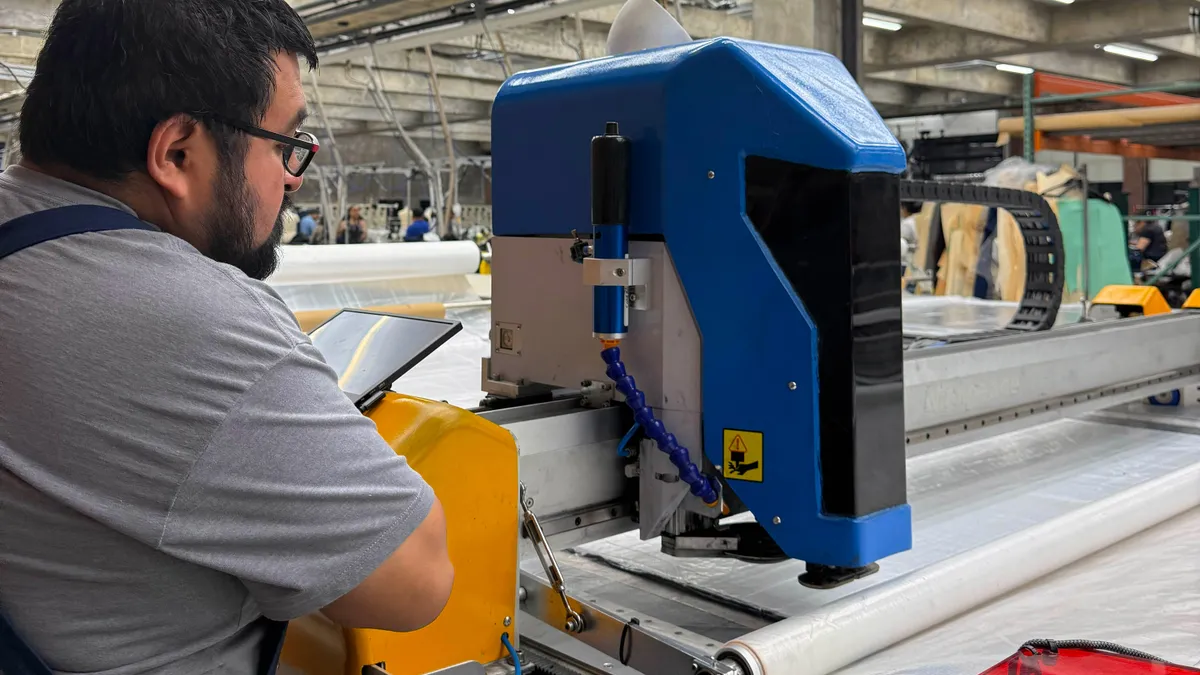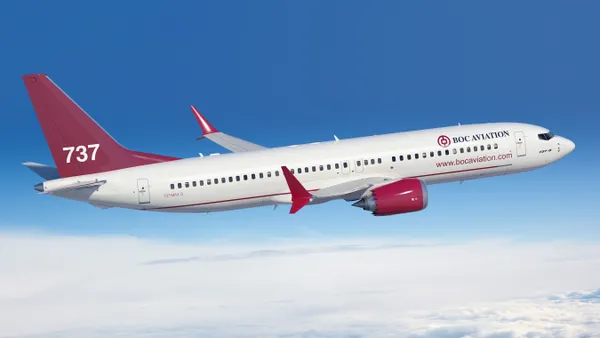Dive Brief:
- Boeing’s commercial aircraft deliveries saw a major year-over-year hike in Q1, distributing 130 aircraft compared to 83 planes in Q1 2024.
- The aircraft giant delivered 105 of its 737 aircraft model, five 767s, seven 777s and 13 of its 787 units. The estimated 57% jump mirrors the company’s 2023 Q1 deliveries. Omitted from the 2025 report was the 747, which Boeing stopped manufacturing in 2022.
- Boeing’s orders have also improved by about 84% YOY at 241, compared to 131. The orders even outnumbered 2023 Q1’s 120, according to Boeing’s website.
Dive Insight:
Boeing’s 2025 is off to a good start as it continues to make progress on its manufacturing safety changes, which it has been implementing since last year’s Alaska Airlines 737-9 Max plane door plug blowout incident.
The company has been using key product indicators to measure its production system stability. The KPIs are part of Boeing’s safety and quality improvement plan, which it submitted to the Federal Aviation Administration last year.
The agency also paused the company’s production ramp-up plans as part of its heightened oversight after the doorplug blowout, capping its plane manufacturing at 38 per month, which Boeing has yet to reach.
Despite the progress, Boeing won’t submit a request for a production increase to the FAA if the KPIs don’t show stability, President and CEO Kelly Ortberg told senators at an April 2 hearing.
Boeing’s deliveries shot up over 56% in Q1 2025
But Boeing’s progress could come to a halt due to some of President Donald Trump’s tariffs. Eighty percent of Boeing’s commercial plane deliveries are outside the U.S., Ortberg added.
“We really are the ideal kind of an export company where we're out selling internationally,” Ortberg said. “So it's important that we continue to have access to that market, and that we don't get in a situation where certain markets become closed to us.”
The Trump administration on Wednesday paused most of the country-specific tariffs for 90 days and raised duties on imports from China to 145%.
While all the tariff-targeted countries with the exception of China are subject to a 10% baseline levy, a 25% tariff on Canada’s steel and aluminum remains in effect, which began April 5.
China, in retaliation, placed a 125% duty on U.S. imports that began April 12. Furthermore, China’s government announced it was also suspending exports on several critical minerals and magnets, such as aluminum, metal and nickel, according to the New York Times. Initially, the country’s government imposed export controls and required China-based entities to apply for an export license with China’s commerce department to ship the minerals overseas. The minerals are used in the aerospace industry to assemble parts and make components more durable and high-temperature resistant.
How these levies will impact Boeing’s operations, including its suppliers and workforce, remains unknown. The tariffs could further hurt Boeing’s finances as it looks to recover from a nearly $12 billion loss last year. According to a PwC analysis in March, the total tariff impact could increase from roughly $8 billion to $109 billion a year for the automotive and aerospace industries.
“These rising costs will reverberate through the entire supply chain, from tier-three and four suppliers to the Major OEMs, exacerbating an already fragile post-pandemic manufacturing environment,” wrote analyst Grant Holve of Forecast International, an aerospace market research firm.












